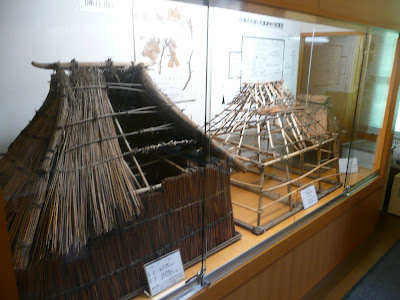A couple of days ago I finally made it to Kyoto, the heart of historical, traditional Japan and the capital city for much of Japan's history. Considering this, I found it quite unattractive. Sure it has many beautiful sites located all around the city, but apart from that it's modern, and functional and the fact that it didn't stop pouring with rain for two days didn't make it any more enjoyable. The first half day I had here, I made it to two important sites, but they were both closed and i just got soaked.
The next day i set out early with water-proof overalls and an umbrella, got to a very impressive spread over the hills on the southern edge of Kyoto, but my camera stopped working. After getting soaked to the skin for the second time, I headed back to the hostel to regroup. I was determined not to let the rain get me down. There was only one thing for it. I had to show Kyoto a bit of "Tel-Aviv chic". I put on some shorts, a t-shirt and my havaianas and set out for Kyoto Castle and the famous Golden pavillion equipped with an umbrella. On the way I purchased a disposable camera. Sometimes you just have to improvise.\



That evening I went out in the Gion district, the area of Kyoto famous for Geishas, to get a bite to eat. Thankfully the rain has stopped and I felt much better. I came across an "Izayaka" - a Japanese pub, originally where Sake is drunk - which seemed popular with the locals. I entered and sat next to a young Japanese guy who was enjoying a beer and a number of different small japanese dishes, a bit like Tapas. I broke the ice by asking whether we were in an Izakaya, as I had never been in one before. Then he asked me where i'm from in his limited English before getting out his phone to use his English/Japanese translater which many Japanese seem to have. Thus one of the strangest conversation of my life began, with me reading badly translated English from his phone, and answering in the simplest way I could with as many gestures i could.
He asked me what I do and he told me he was a Nurse. He asked if this was my first visit to Japan and where I had been, so I reeled off a bunch of places I had visited in Japan, most of which he knew. I also got out my map and pointed out all the places I'd seen in Kyoto. We exchanged names twice as we forgot each other's names the first time, but I forgot his the second time as well, though I remember that Japanese introduce themselves with their surname first. Before I knew it he offered me a "combustible rice-ball", which was a bad translation of a "grilled rice-ball." In response, I ordered a small bottle of Saki and 2 glasses; I poured him a glass, and he then poured me one, according to Japanese etiquette. We said "Kampai" and sipped our Sake slowly; you don't drink saki in one go. When he orderd the bill and it came to over 10,000 yen (over $100) I thought to myself, nurses get paid well in Japan. Anyway, it was a wonderful end to a miserable day in Kyoto. The experience just showed my that with a bit of will and the help of a few gestures, gadgets or props, we can all find a common language.

 The Japanese love their castles and gardens so it was fitting that I spend one day visiting a good example of each. I dedicated my second day in Hiroshima to two short excursions outside of the city, first to Okayama which has one of the three most beautiful gardens in Japan, Koraku-en, and then to Himeji-jo, the most impressive original Japanese castle left standing. I don't have much to tell except to say that they were both well worth it and to show you my best photographs with my 3rd disposable camera. I think I was getting better at using them, but you can be the judge of that.
The Japanese love their castles and gardens so it was fitting that I spend one day visiting a good example of each. I dedicated my second day in Hiroshima to two short excursions outside of the city, first to Okayama which has one of the three most beautiful gardens in Japan, Koraku-en, and then to Himeji-jo, the most impressive original Japanese castle left standing. I don't have much to tell except to say that they were both well worth it and to show you my best photographs with my 3rd disposable camera. I think I was getting better at using them, but you can be the judge of that.















































